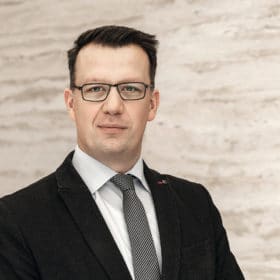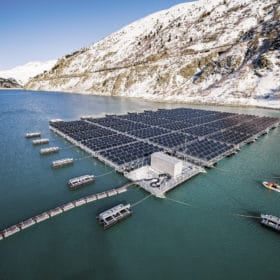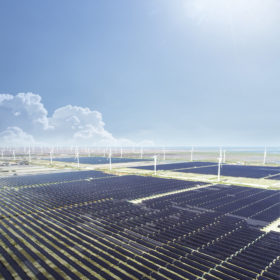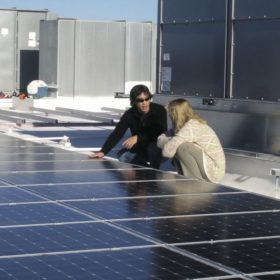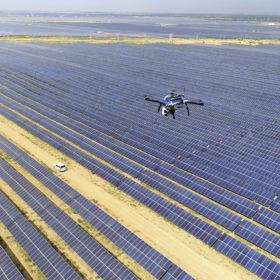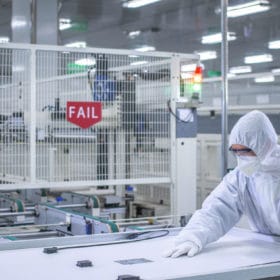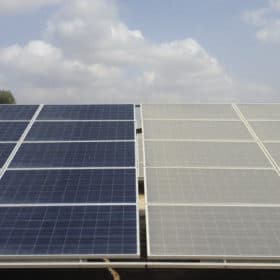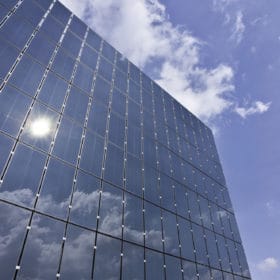New era of thin films calls for PVD
A rethink is required for the mass production of high-efficiency solar cells, says German PV cell production equipment supplier Von Ardenne. And it’s not just TOPCon and heterojunction PV where physical vapor deposition (PVD) processes can be applied in production, but also in perovskite-crystalline silicon cell manufacturing, says Sebastian Gatz, the business head for photovoltaics at Von Ardenne.
Floating up to standard
Floating PV is a growing market, especially in Asian countries with land pressures. However, like many promising niches, it is growing faster than the standards surrounding it. With installed floating PV capacity set to double in 2021, a raft of various and sometimes competing standards are being floated, but the question remains – what is truly the best way forward?
In Conversation: Dust matters
Anil Kottantharayil currently leads the Centre for Research in Nanotechnology and Science, as well as the Sophisticated Analytical Instrument Facility, at the Indian Institute of Technology (IIT) Bombay. He works on high-efficiency crystalline silicon solar cells, the impact of dust on solar panels, and the long-term reliability of photovoltaic modules.
China’s battery storage awakening
China’s efforts to shift electricity generation from a coal-dominated system to a greener mix of renewables is not only centered on wind, solar and other technologies – the country is also rapidly pursuing energy storage. Vincent Shaw reports from Shanghai.
Big enough, already
Large-format solar modules are big in size, big in promise, and a big topic on the minds of many. Aaron Hall, president of Borrego, outlines his company’s experience with larger modules and explains the advantages and potential pitfalls.
Inverter procurement must grow up
Joseph Song, co-founder of Segue Sustainable Infrastructure, charts a brief history of the solar industry. He applauds the industry’s heavy scrutiny of solar module quality, which is regularly challenged by developers and EPCs. At the same time, inverters remain more of a black box, where real visibility of specs and features is less common, and word of mouth is trusted over limited datasheets.
Getting smart about solar
As solar PV increases its share in the world’s energy mix, it is becoming increasingly clear how valuable the data gathered from renewable energy generators is in informing important decisions about operation, maintenance and grid integration. Yazeed Al Mousa examines the latest applications for artificial intelligence in PV project development and operation.
Finding faults faster
PV cell and module manufacturers are increasingly turning to artificial intelligence to monitor production lines and the products coming off them in minute detail. As inline monitoring and testing equipment become more sophisticated, cell and module makers must be prepared to manage the enormous amounts of data and pull out the points that will save them time and money. pv magazine examines the software solutions backing state-of-the-art PV production.
Smarter robots to step up to service
On Dec. 1, Tel-Aviv based robotic cleaning provider Ecoppia launched an initial public offering on the Tel Aviv Stock Exchange. In doing so, the seven-year-old solar startup raised $83.8 million from public and institutional investors – although heavily slated toward the latter. Jean Scemama, who joined Ecoppia as CEO in April 2020, says the IPO will allow it to double down on R&D efforts and expand into the provision of services.
Double-digit growth ahead for BIPV
In November, experts at Switzerland’s University of Applied Sciences (SUPSI) and the Becquerel Institute published the “BIPV Status Report 2020.” It is designed to serve as a practical handbook for all stakeholders in the development process for building integrated photovoltaics (BIPV) by providing valuable information and approaching the topic of solar construction from different perspectives. Philippe Macé, head of business intelligence at the Becquerel Institute, explains why the stage is set for BIPV.
